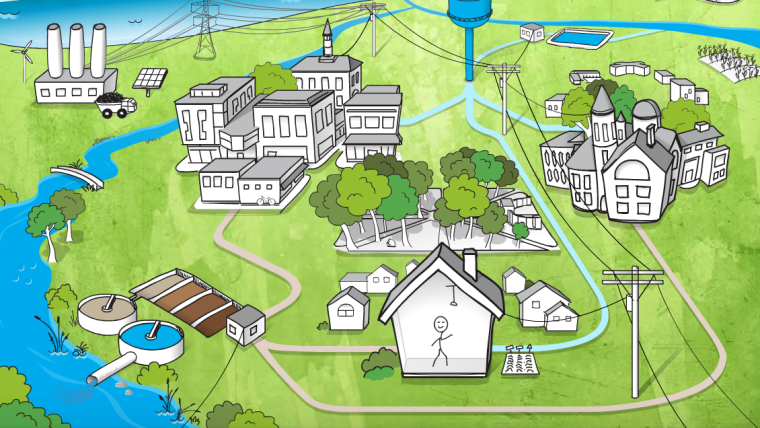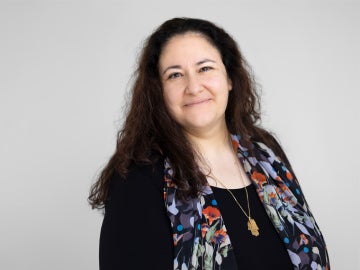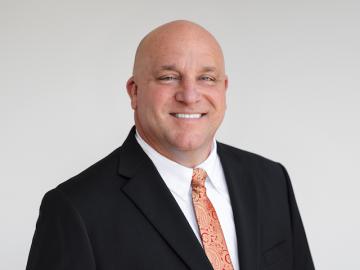Campus News
Environmental Dashboard Project Expands
November 6, 2013
James Helmsworth

On November 1, Oberlin’s Environmental Dashboard project received a grant for $99,926.67 from State Farm’s Youth Advisory Board (YAB) for the implementation of environmental dashboards in all Oberlin public schools. YAB, which consists of 30 students ages 17 to 20 from the United States and Canada, assists the insurance provider in assigning $5 million in service-based grants each year.
“Their charge is to select projects that are likely to have a large impact on youth,” says Environmental Studies Professor John Petersen who, with fellow Oberlin faculty Rumi Shammin and Cindy Frantz, leads the Environmental Dashboard project. "We are honored that these student leaders see great promise in the Environmental Dashboard collaboration between Oberlin College and the Oberlin public school system.”
The Environmental Dashboard project is an initiative designed to give Oberlin students and the community feedback on their consumption of resources. Displayed on LCD screens, the environmental dashboard consists of three elements: a display that shows how much electricity and water is being used in the individual building in which the screen is located, a display connected to Oberlin’s Municipal Light and Power System, fresh water and waster water treatment plants, and the nearby Plum Creek, which shows how Oberlin is managing its resources as a community, and a bulletin showcasing how community members are acting sustainably.
“The idea is to really situate the decisions that individuals make in their homes, businesses, schools, etc., in this larger community context,” says Petersen.
Currently, dashboards are in place in many buildings at the college, as well as Slow Train Café in downtown Oberlin, the Oberlin Public Library, and at Prospect Elementary, as part of a pilot program to explore how to best use it in a school setting.
The process of developing the dashboard has been a collaborative one involving Oberlin College students and professors, and members of the community. Since its outset, the project’s team has been working with teachers at Prospect to develop curricula that use the dashboard.
Kim Koos, a teacher at Prospect, says working with the Environmental Dashboard project has been a positive experience. “They’ve been extremely open-minded, accepting any advice that

anyone from the building has given them,” she explains. “I really feel like they have been really cooperative in this being a joint process.” Koos says that she uses the dashboard in a unit about the planet’s resources, and in math unit about graphing.
Teachers at Prospect also say that the dashboard has motivated their students to think more sustainably. Felicia Christian, another teacher at Prospect, says that her students have started taking personal responsibility to conserve resources themselves. “Every time I left the room they’d say things like ‘make sure you turn the lights off,’” she says of her last class, adding that they also designated a classmate to be responsible for turning off their electronic board.
Not only will the State Farm grant allow Oberlin City Schools to implement the dashboard in its three other schools—Eastwood Elementary, Langston Middle School, and Oberlin High School—but it also provides the resources for further curricular development. Shane Clark, a fourth-year environmental studies major at Oberlin who works with the Dashboard project and with students at Prospect, both in helping them use the dashboard and in its garden, says efforts like these are important for promoting sustainability.
“Children can be powerful agents of change,” she says.
You may also like…
Remembering Former Visiting Assistant Professor Leila Ben-Nasr
Leila Ben-Nasr, a former visiting assistant professor of comparative American studies, died on November 28, 2025.
Oberlin Community Remembers a Beloved Retired Professor
A member of Oberlin faculty for 13 years, Peggy Bennett was known by students and the Oberlin community for creating and leading MusicPlay, a preschool classroom and learning lab run as part of the...
Eric Rooks Named Director of Campus Safety at Oberlin
Longtime public servant emphasizes collaborative partnerships and kindness.


